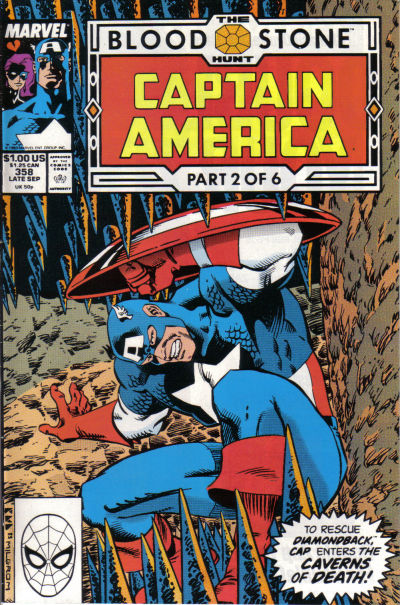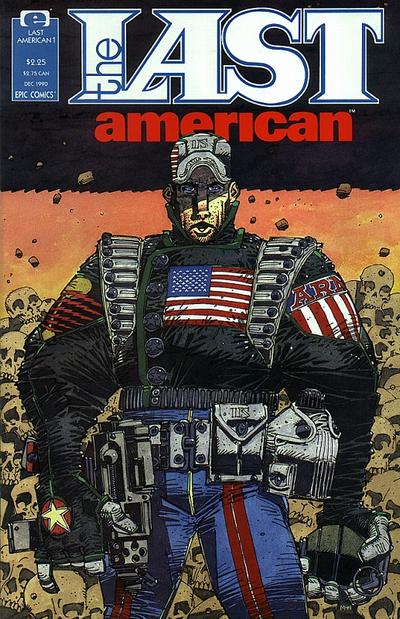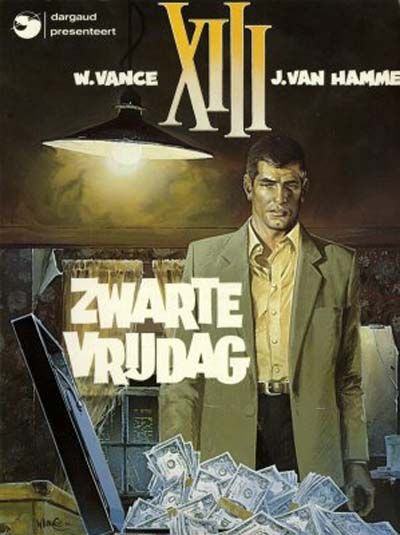It took me just one issue to fall in love with Mark Gruenwald’s Captain America. This was the issue.

Part two of the Bloodstone Hunt opens with Cap descending into a subterranean cavern to find the source of an annoying little transmission. Running and diving his way through a series of traps, he comes in a ritual chamber that has the skeletons of “three dead men, one dead woman, one dead dolphin”. Descending even further he finds the source: a crate containing the equally dead Ulysses Bloodstone and a very alive Diamondback. He quickly takes her back to Avenger island, where we just have time to realise John (son of Jonah) Jameson is the new Quinjet pilot before a quick radation meter has been rigged up using Bloodstone’s skull and it’s off to South America to find the first of the fragments of the jewel that gave Bloodstone his powers. They get there, are immediately taken prisoner by an unknown Inca tribe and find Baron Zemo and his stooges — Batroc, Zatran and Machete — all trussed up on a ceremonial sacrifice wheel. Whew. All that and an US Agent backup that has him going up against the Scourge.
That really was the perfect comic for fifteen year old Martin, who never liked a superhero comic better than if it had loads and loads of unknown characters. The whole Bloodstone Hunt was basically an excuse for Gruenwald to do an Indiana Jones style adventure serial set in the more obscure parts of the Marvel Universe, with each issue ending on a cliffhanger, natch. The very next issue they’re off to the Bermuda Triangle, diving into a wrecked airliner (probably the one which got Skull the Slayer his origin), getting into an underwater fight with Zemo’s henchmen and that leading to (of course) a shark attack. The next issue: Egypt and The Living Mummy. Then finally, Tokyo where a yazuka gang has the final piece. Fifteen year old me ate that shit up. Kieron Dwyer’s art didn’t hurt either, nor did M. D. Bright’s on the US Agent backup.
What made it even better, but that would only become apparent in the issues directly after this, is that The Bloodstone Hunt saw the debut of a major new Captain America villain: Crossbones, who later turns out to work for the Red Skull, Cap’s greatest enemy. And who may also share a past with Diamondback, as established in the very next issue. For somebody who until this point had barely read any Captain America stories, as few had been published in the Netherlands, all of this made me fall in love with Cap and especially Gruenwald’s idea of who Cap was. It was his writing that made Captain America my favourite Marvel hero.
Gruenwald of course stayed on the title until it was cancelled under him for Heroes Reborn. You could argue that even at the time I started reading it, he had already written his best stories (Serpent Society, the Scourge of the Underworld, the replacement of Cap by a rightwing zealot), but to me the run from #358 to #386, with first Kieron Dwyer and then Ron Lim on art duty is the classic Captain America.



